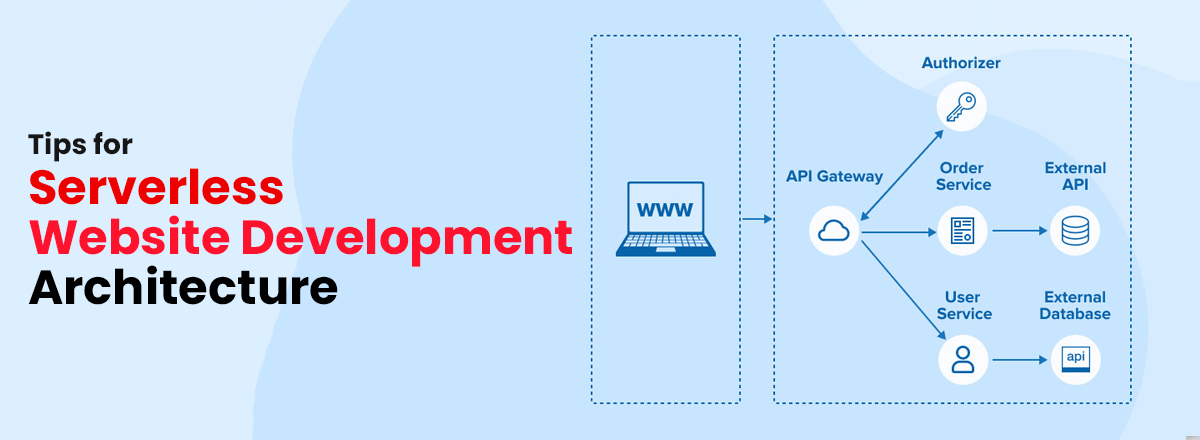Tips for Serverless Website Development Architecture
Serverless architecture is a paradigm that shifts the traditional approach to application development by abstracting away the management of servers in a custom website development. In a serverless model, developers no longer need to provision, scale, or maintain servers. Instead, the focus is on writing code that responds to specific events or triggers.
1. Event-Driven Execution
Serverless functions are executed in response to events, such as HTTP requests, changes in data, file uploads, or scheduled tasks. Each function, or serverless computing, is a unit of execution that performs a specific task. This event-driven nature allows applications to scale automatically based on demand, with resources allocated dynamically.
2. Stateless and Ephemeral
Serverless functions are stateless, meaning they do not retain information between invocations. Each function execution is isolated and ephemeral, allowing the infrastructure to allocate resources as needed. With its statelessness, it simplifies development but requires careful consideration of data storage and persistence in your work via an affordable website development service help.

3. Pay-As-You-Go Pricing
One of the key advantages of serverless architecture is its cost model. With traditional server-based models, you pay for continuous server provisioning, regardless of usage. In a serverless environment, you only pay for the compute resources consumed during function execution with a cheap website development deal. This pay-as-you-go model can be more cost-effective, especially for sporadically used applications.
4. Scalability and Elasticity
Serverless platforms automatically scale resources for the best website development help based on the number of incoming events or requests. As the demand for an application increases, additional instances of the serverless function are spawned to handle the load. This elasticity ensures that applications can seamlessly scale up or down in response to varying workloads.
5. Vendor-Specific Implementations
You can buy website development services from major cloud providers, including AWS Lambda, Azure Functions, and Google Cloud Functions, which offer serverless platforms with vendor-specific implementations. Developers can choose a provider based on their preferences, existing infrastructure, and additional services offered within the cloud ecosystem.
6. Stateless Coordination
While serverless functions are stateless, coordination and communication between functions or services may be required to achieve more complex tasks. Stateless coordination methods, such as message queues or event streams, help orchestrate workflows and maintain consistency across distributed serverless components via digital website development online.
7. Rapid Development and Deployment
Serverless architecture accelerates development cycles by allowing developers to focus on writing code rather than managing infrastructure. With reduced operational overhead, teams can iterate quickly, deploy updates seamlessly, and respond to changing requirements in a more agile manner.
8. Challenges and Considerations
While serverless architecture offers numerous benefits, it's important to consider its limitations. Cold start times, where a function needs to be initialized, can impact latency. Additionally, managing state across serverless functions requires thoughtful design. Developers should be mindful of resource limitations, security concerns, and vendor lock-in when adopting serverless solutions.
Related Blogs
- A/B Testing in Web Design and Digital Marketing: Strategies for Success
- What is an Emblems Log Design and How it is Created?
- Understanding NFTs in Logo Design Service
- How to Integrate Immersive 3D World into UI/UX Website Designs?
- Tips for Serverless Website Development Architecture
- Tips to Design NFT Character for Mobile Apps Design
- How To Create Raw File, .Png And Regular Jpg File For Logo Design?


